RHS Horticultural Advisor Chris Taylor shares tips on growing fruit and veg in containers, perfect for gardeners with limited space or without access to open ground
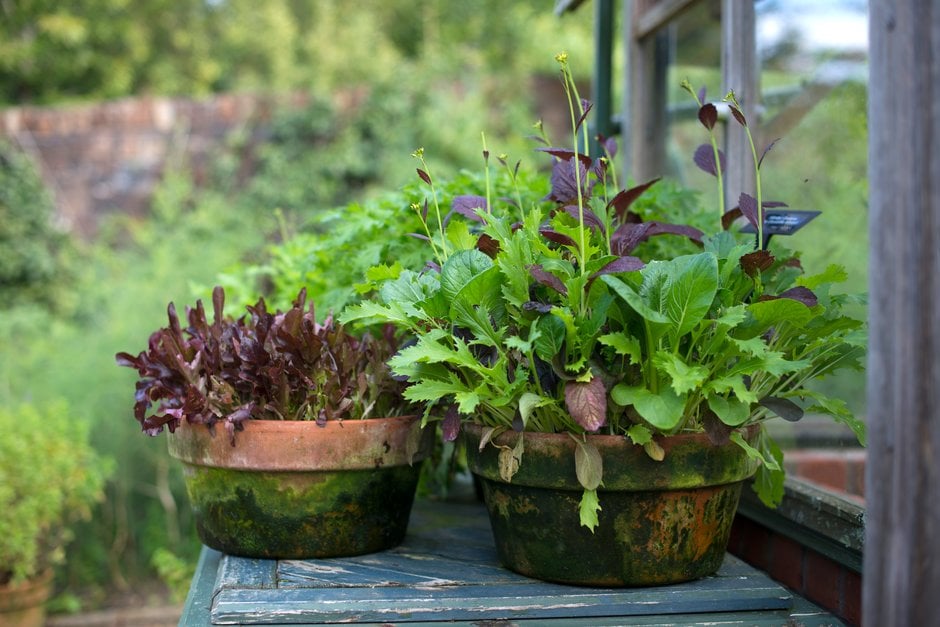
 I grow all my vegetables in containers of various kinds. Some are large tree containers, some old window boxes, and some I’ve no recollection of where they came from. Although most are plastic, they get reused over and over again, and retain moisture better than porous terracotta.
I grow all my vegetables in containers of various kinds. Some are large tree containers, some old window boxes, and some I’ve no recollection of where they came from. Although most are plastic, they get reused over and over again, and retain moisture better than porous terracotta.
I fill my containers with a mixture of topsoil and multipurpose compost. The topsoil gives the mix body and drainage, whereas the compost retains moisture. This provides the holy grail of growing medias – moist but well-drained.
For greedy crops such as tomatoes, cucumbers, beans and squash, I also mix in digestate (rotted commercial vegetable matter). This is brilliant stuff, which I term ‘vegan manure’ since it’s completely plant-based, but well-rotted manure would work just as well.
Once the crops are established, I feed them once a week (or when I remember) with liquid organic tomato fertiliser. This is rich in potassium, so it promotes the development of flowers and fruit.
Tomatoes
This year I’m growing the well-known ‘Gardener’s Delight’. Although it no longer has an AGM (Award of Garden Merit), I still think it’s a good all-rounder – perfect for sandwiches, salads and sauces.
‘Gardener’s Delight’. Although it no longer has an AGM (Award of Garden Merit), I still think it’s a good all-rounder – perfect for sandwiches, salads and sauces.
They’re growing in bags of peat-free loam-based compost, cut in half and stood on end to create two planting pockets. This gives them a deeper root run than traditional growbags. To support the tomatoes, I wind the stems around string that’s looped and tied around the stem at the bottom and attached to a frame at the top.
A few years ago when we had a wet summer, I vowed to never grow tomatoes outdoors again, because they were hit badly by blight (a fungus-like disease that enters through the wet leaves). Of course, that year was followed by the last few years’ warm, dry and sunny summers – perfect weather for toms. For that reason, I relented, and decided to give them another go.
They’re not completely out in the elements this time: I repurposed a shelf and zip cover mini greenhouse to provide some protection from the rain. Although blight remains a possibility (usually arriving in late summer), I’m keeping everything crossed.
Roots and leaves
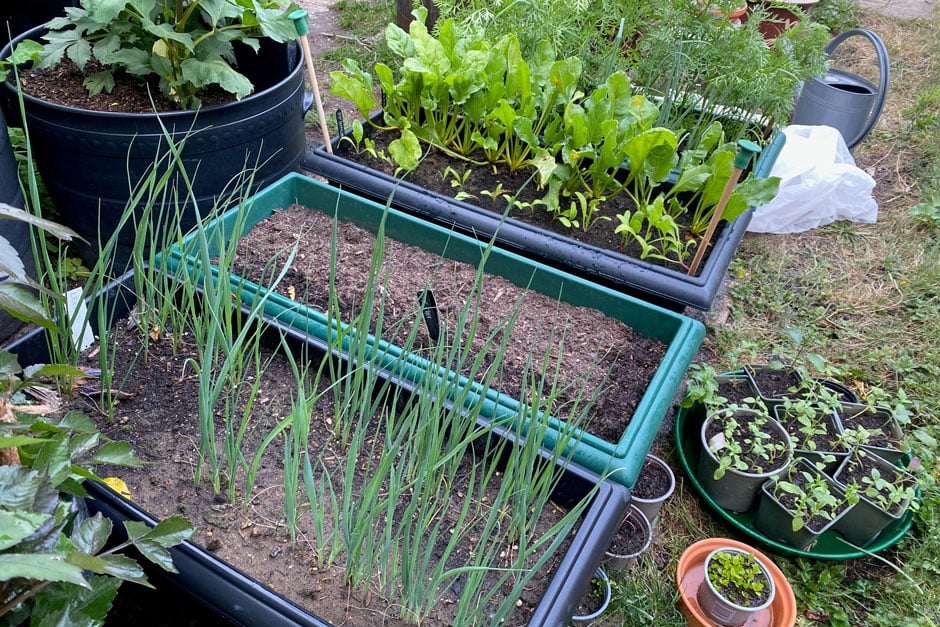
 I grow root veg like carrot ‘Short and Sweet’, golden beetroot ‘Boldor’ and spring onions in large window boxes or troughs. This means I can still sow in straight lines – I’ve never quite got out of this old fashioned habit.
I grow root veg like carrot ‘Short and Sweet’, golden beetroot ‘Boldor’ and spring onions in large window boxes or troughs. This means I can still sow in straight lines – I’ve never quite got out of this old fashioned habit.
However, I’m a bit more relaxed when it comes to mixed salad leaves, which I thinly scatter across the whole surface.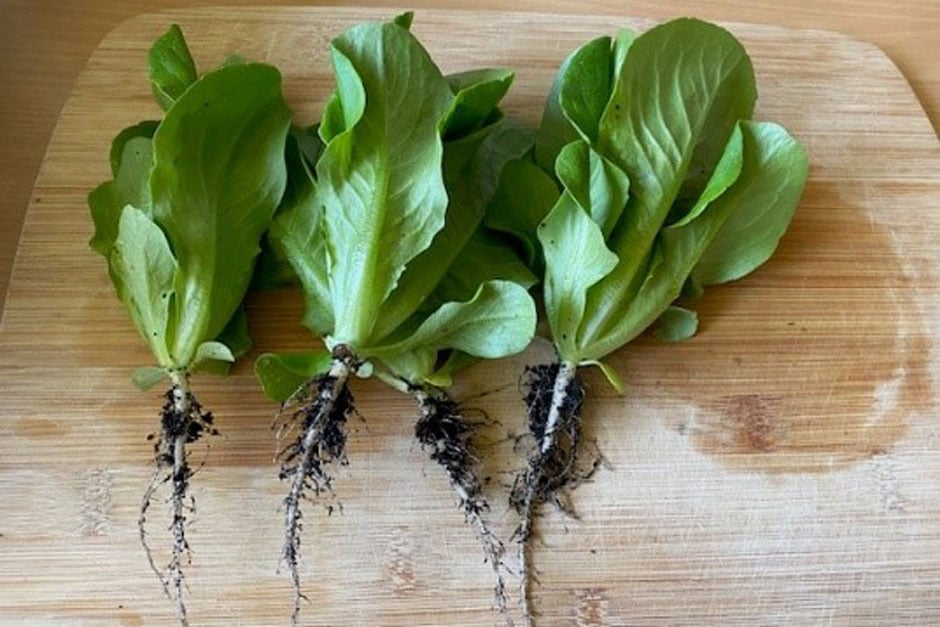
Little gem and pak choi have also been a success this year. As they developed, I ate the thinnings (pictured, with roots attached) first, then allowed the rest to develop to maturity – so I feel I had two crops for the price of one.

Climbing beans
I grow all my climbing beans in deep but wide containers with wigwams that have cane spacers at the top, so the beans don’t get bunched together.
My best variety hands-down is climbing French bean ‘Cobra’. It’s incredibly high yielding, so much so that to keep up with the sheer amount of produce, I shoehorn them into recipes that never intended them to be there.
 Cucumbers
Cucumbers
I also grow cucumbers outdoors in the same way, tying their stems to the canes as they grow.
Bear in mind that you need to choose cultivars that are suitable for outdoor growing such as ‘Marketmore’ and ‘Mini Munch’.
Strawberries
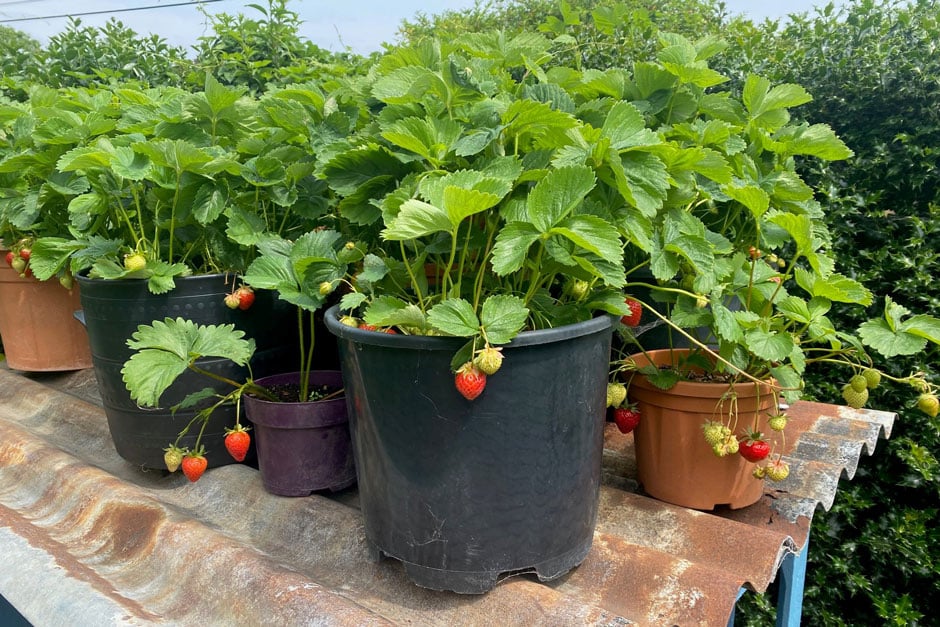
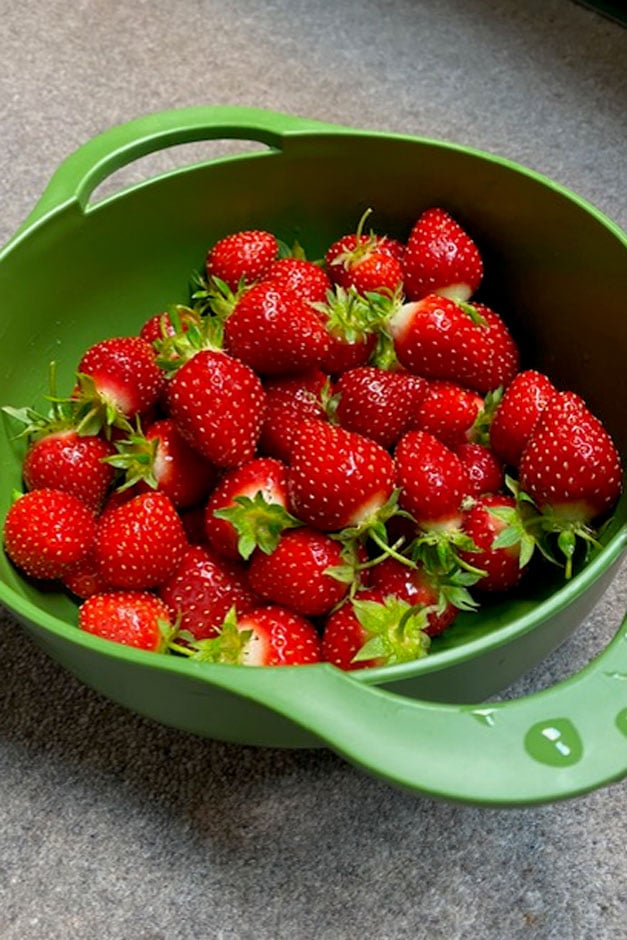 Strawberries work exceptionally well in containers, as their fruits stay clean hanging over the rim. My ever-growing number of plants, propagated over and over from runners, are of one variety – ‘Symphony’. Bought as bare-root cold-stored plants in spring, they cropped in their first year. Now, I have nine large pots, sat on top of the corrugated tin roof of the woodshed.
Strawberries work exceptionally well in containers, as their fruits stay clean hanging over the rim. My ever-growing number of plants, propagated over and over from runners, are of one variety – ‘Symphony’. Bought as bare-root cold-stored plants in spring, they cropped in their first year. Now, I have nine large pots, sat on top of the corrugated tin roof of the woodshed.
Up here they’re out of slugs’ reach, and I think the heat from the tin roof ripens them more quickly. I don’t net them, so occasionally they are pecked at by hungry birds, but I have plenty to share.
Blueberries
I made the mistake of thinking I needed very dwarf varieties of blueberries for containers. Although compact, these tended to produce sparse crops of small fruit. Standard blueberries will grow perfectly well in large containers of ericaceous compost – just remember to water them with rainwater rather than tap water (since this is too alkaline). Plants are self-fertile, but you tend to get heavier crops when you have two or more plants.
Herbs
For herbs, I switch to using terracotta pots – these are ideal, since many herbs are of Mediterranean origin and therefore prefer drier soils. Growing them in just topsoil (no added organic matter) means they stay compact, with less lush leafy growth and a more intense flavour. Many herbs, especially thymes and lavender, bring in insect pollinators that will also help to pollinate your veg crops.
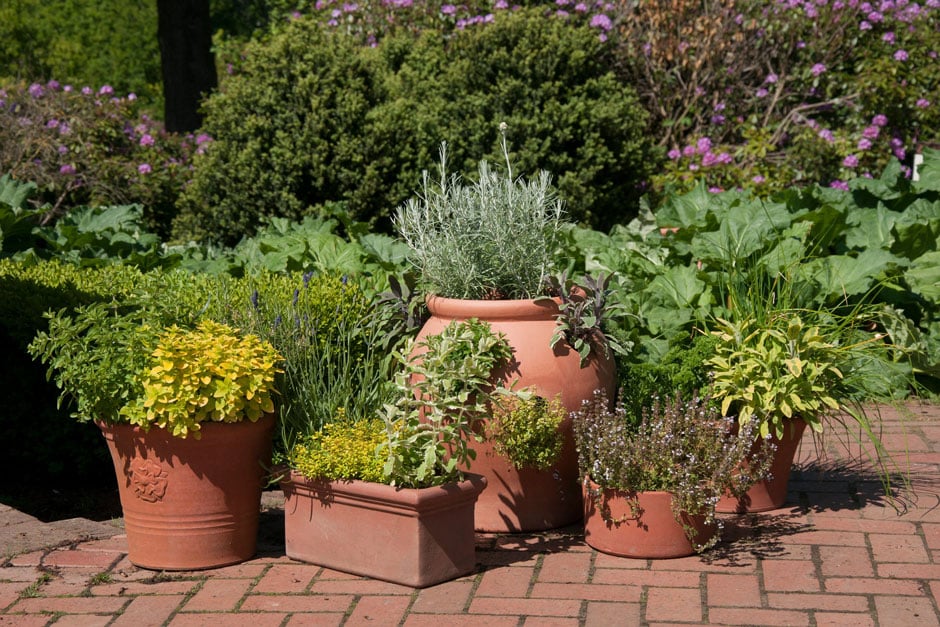 The only veg I’ve yet to try in pots are brassicas, which tend to make huge leafy plants that are too big for pots, and parsnips, whose roots are so long that they resent containerisation. This leads me to plea, ‘can someone breed a miniature cabbage or short-rooted parsnip, pleeease?!’
The only veg I’ve yet to try in pots are brassicas, which tend to make huge leafy plants that are too big for pots, and parsnips, whose roots are so long that they resent containerisation. This leads me to plea, ‘can someone breed a miniature cabbage or short-rooted parsnip, pleeease?!’
Pick of the crop
 Look for the RHS Award of Garden Merit (AGM) when buying vegetable seed or small plants. You can also download the RHS lists of recommended cultivars.
Look for the RHS Award of Garden Merit (AGM) when buying vegetable seed or small plants. You can also download the RHS lists of recommended cultivars.
You may also be interested in...
About the author – Chris Taylor
I’m a Horticultural Advisor at the RHS. My job involves answering gardening questions from RHS members, whether they need to know how to prune apples or seek advice on creating a wildflower meadow. In my spare time I enjoy looking after my challenging dry shady garden, and growing many things (including veg) in pots.

